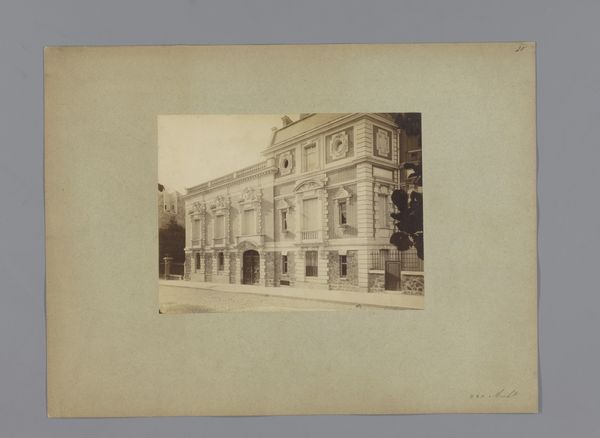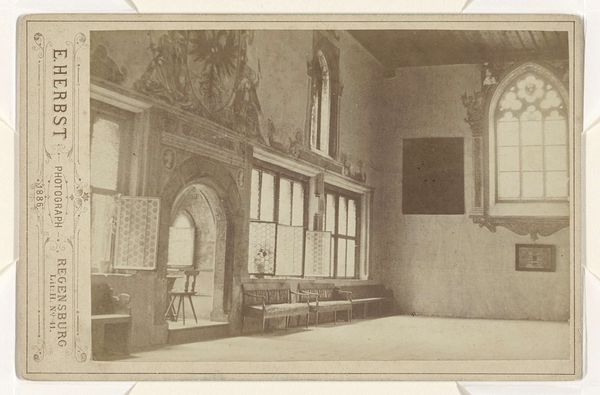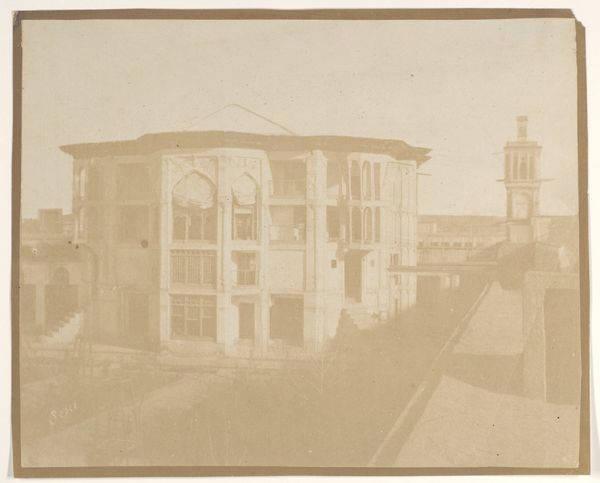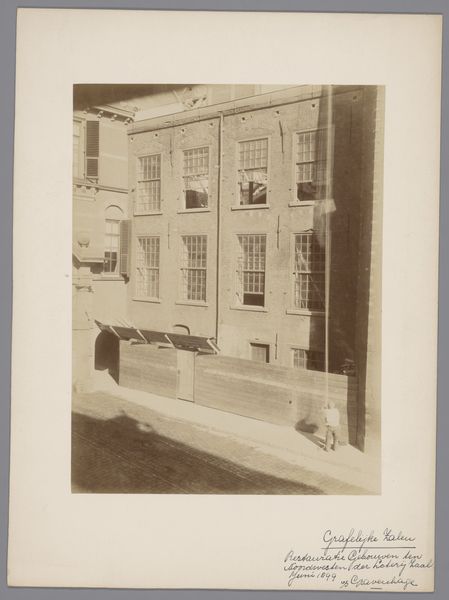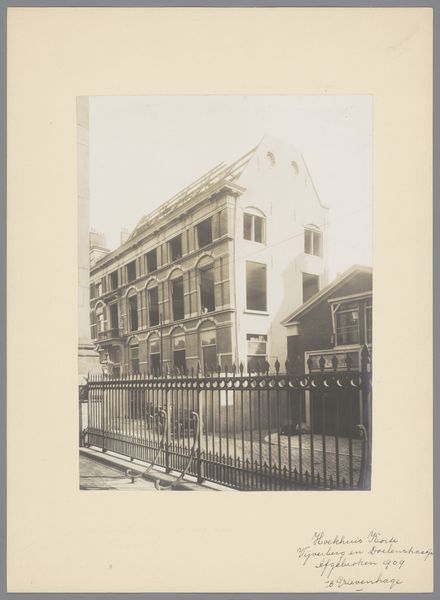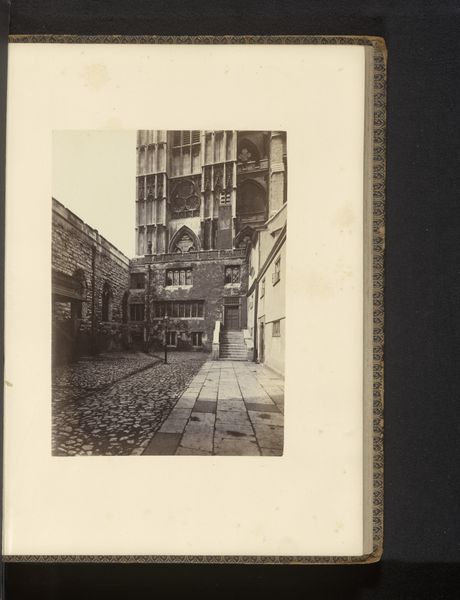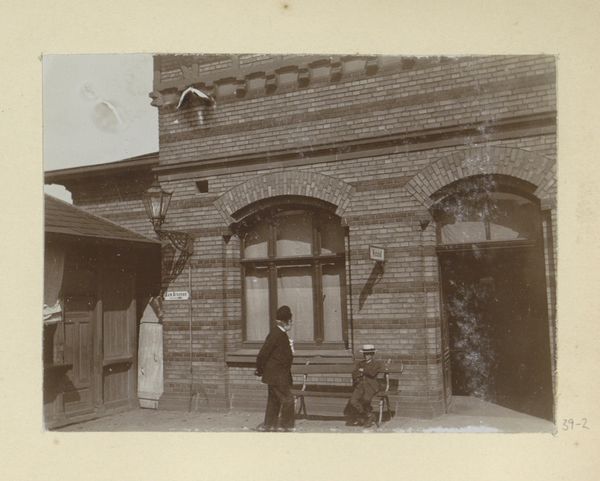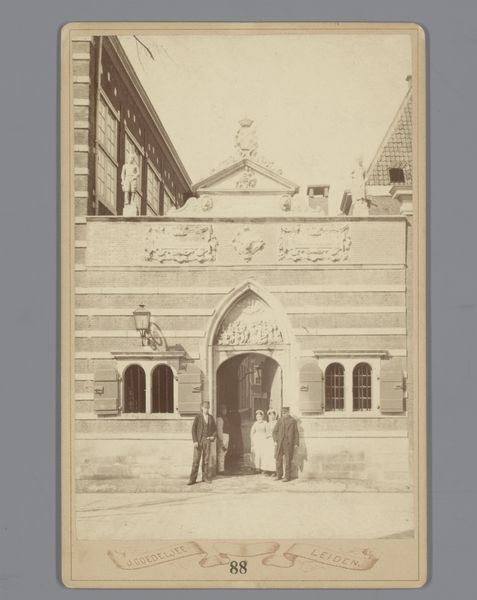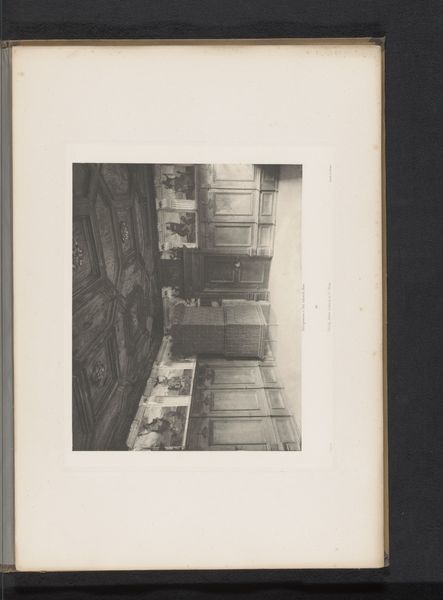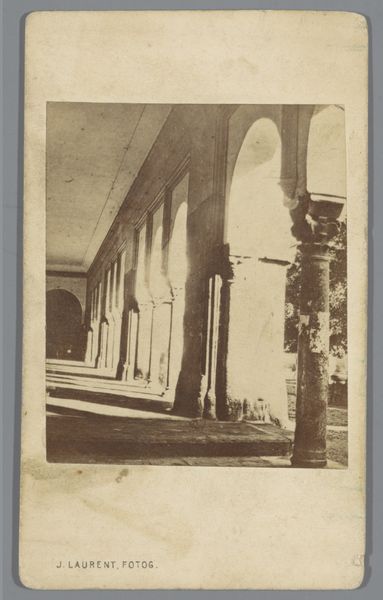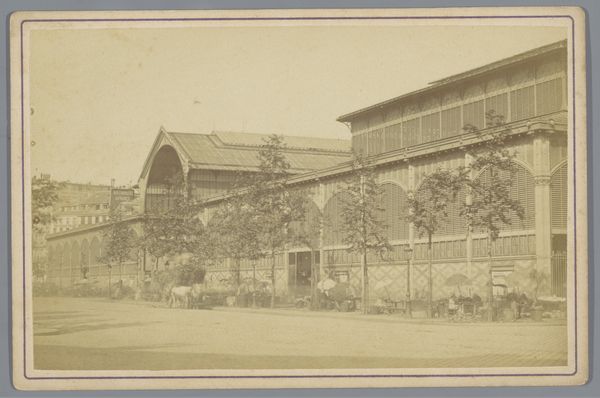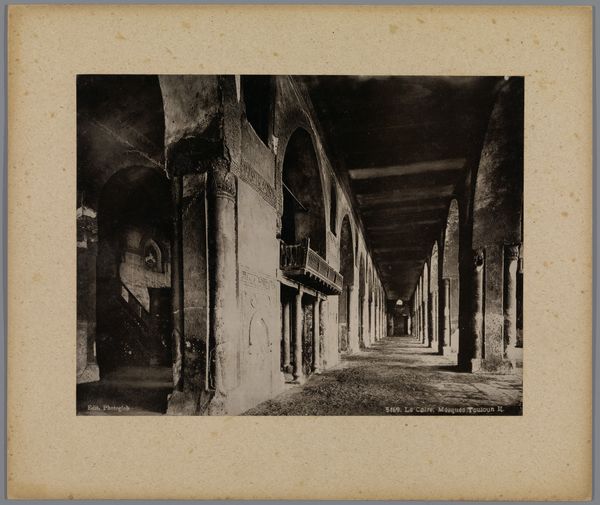
Dimensions: height 110 mm, width 170 mm
Copyright: Rijks Museum: Open Domain
This albumen print of Bertel Thorvaldsen's grave in Copenhagen was made by Edvard Valdemar Harboe sometime in the mid-19th century. Photography was still a relatively new medium at the time, a chemical process involving light-sensitive materials and meticulous darkroom work. Note the warm sepia tone, typical of early photographic prints. The tonal range in an albumen print like this one results from the chemical reaction of silver salts on a paper base. The process was labor-intensive, demanding skilled hands to coat the paper evenly, expose the print correctly, and carefully develop and fix the image to ensure its longevity. Photography in the 19th century was enmeshed with the culture of mourning. The material qualities of this photograph—its sepia tones and paper support—contribute to its evocative power, inviting contemplation on time, memory, and loss. It encourages us to reflect on the role of both photography and sculpture in preserving and shaping cultural memory.
Comments
No comments
Be the first to comment and join the conversation on the ultimate creative platform.
